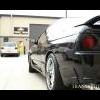Healthy Compression For Rb26dett ?
Announcements
-
Similar Content
-
Latest Posts
-
Initial/early bite is a feature of.....generic pads. Things that work cold. Just put Bendix Ultimate in it. If you don't like them, it's only $3.50 wasted and an hour to change them. I've been using Intima SR, and they seem to be a good performance pad. Street friendly and able to take at least a little beating.
-
This is my first post after registering.. I hope i can find useful resources on this forum. Great forum.
-
As I implied in my post, I have NO idea what the were. But in case I didn't make it clear, the way they performed was brilliant; whatever the brand was. I think it was the compound that made the difference. And if they were Bendix, then sign me up, I want another set. I did drive down mount Ousley (just outside of the Gong) a few times, and they showed no untowards performance. Its not the low dust that I am looking for NOW. At the time I needed low dust, but now I have no issues with dust but want the initial/early bite of the pads that were used. Yeah, the early cold squeal may of been due to a missing shim or such. And to repeat, its not the low dust I am seeking, its the initial bite of the pads and increase in bite as the warmed up during each breaking. As soon as I let off, I don't remember the breaks being extra sticky if I used them again soon after. But I also did not test that theory. Thanks for the recommendation, But I would prefer to choose something specifically with the behaviour I described. I assume that they didn't use the default compound off the shelf, as we discussed the dust issue at length. And the early squeal when cold, I have seen the sound is more of an issue with some pad compounds. Mostly ceramic, which also are said to produce less dust.
-
Well, in 2007 he must have been charging about $1800 an hour. He only looked at the car for 5 minutes. And another 4 to write the report wrong, and another minute to correct it. Mind you, this was for a car that was: Stock engine, fmic (hole in drivers guard), all alloy intake and custom air box, 3 inch turbo back exhaust, lowered, and a set of 17" Advans (255/40/17 rear and 235/45/17 front). It was nothing crazy. The blue slipper wanted the "hole in the guard" engineered. But that was because he got the shits that I wouldn't "relocate the battery from the boot, back to the factory position in the engine bay"... In an R33 GTST... Also for emissions, E85, and don't go wild on timing. It's amazing how the closer you get ignition timing towards max torque, the last couple of degrees really throw NOx counts right up. And for the huge increase in emissions, it's only a small increase in torque.
-
He'll be looking down and swearing about "the damn apprentice" for trying to convince Duncan to use percussive maintenance... 😛
-




Recommended Posts
Create an account or sign in to comment
You need to be a member in order to leave a comment
Create an account
Sign up for a new account in our community. It's easy!
Register a new accountSign in
Already have an account? Sign in here.
Sign In Now